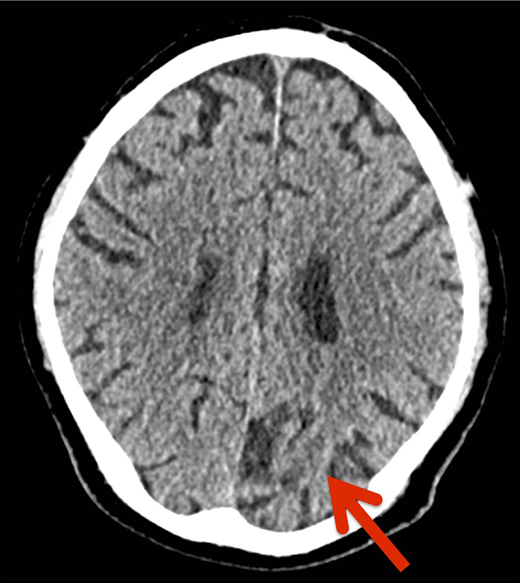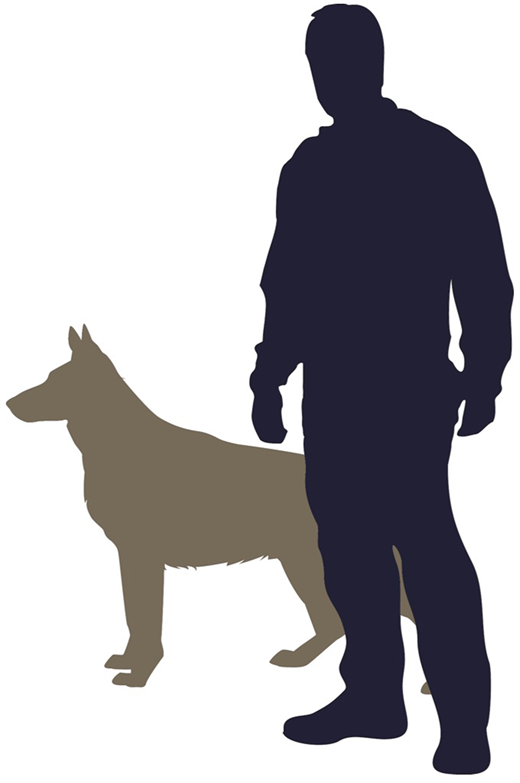Patient Complaining of Dog Following him… Real or Fake? Real or Hallucinations?
A 74-year-old male presented to the outpatient department for his routine checkup. He reported seeing images of a dog following him on his right side. The patient did not report unconsciousness or any other associated symptoms. The patient complained that the hallucinations are very distressing for him.
History:
Past history revealed no psychiatric condition, neither the patient had a history of substance abuse. The patient’s medical history revealed an episode of infective endocarditis affecting the aortic valve for which he was successfully and completely treated.
Physical Examination:
On examination of the nervous system, isolated right inferior quadrantanopia was identified. The unusual visual hallucination was elicited only in the area of the visual field defect. The rest of the examination and review of the systems were unremarkable. There were no disturbances in the consciousness, no complaints of headache, vomiting, nor there was any evidence of psychosis or substance abuse.
The patient’s mental state examination was also unremarkable.
The computed tomography scan of the head revealed a left occipital lobe infarct. The findings on the CT scan were congruent with the clinical examination.

A working diagnosis of infarct from an embolus secondary to the infected aortic valve was made. There was no evidence of any ocular disease.
The treating neurologist suggested a diagnosis of Charles Bonnet’s syndrome (CBS) secondary to septic embolus. Other differential diagnoses that were considered included epilepsy, neurodegenerative disease (e.g., Parkinson’s disease and Lewy body dementia), and psychiatric disease (e.g., affective disorder and schizophrenia).
The patient was reassured that his visual hallucinations were, in fact, harmless. No treatment was provided as it was unnecessary, but the patient continued experiencing visual hallucinations.
An early and correct diagnosis is imperative to prevent a wrongful diagnosis of a psychiatric condition; followed by reassurance and patient education to avoid unnecessary panic. Medical interventions are reserved only for patients experiencing distressing hallucinations or for those with associated psychiatric conditions.
Charles Bonnet’s syndrome (CBS) is a disease which is characterized by visual hallucinations that are not secondary to psychosis or substance abuse. Patients experiencing these visual hallucinations are aware that their hallucinations are not real.
However, hallucinations can be simple or complex. Examples of the former are non-formed images such as flashes of light, patterns, shapes, or lines. Complex hallucinations include images of people, animals, or scenes. These visual hallucinations are harmless and do not involve any other senses.
The mainstay of management is counseling the patient and ruling out any serious underlying disease. Appropriate eye care, regular visits to the eye specialist to monitor the loss of vision, and avoiding stress or conditions that may aggravate CBS are a few other steps to manage the condition. Some patients may require medications to control the hallucinations, including olanzapine, clonazepam, carbamazepine, etc.
Certain techniques, such as rapid eye movements or blinking, may help suppress the hallucinations in some patients. All in all, there is no single standard treatment for patients with CBS; however, counseling and reassurance remain indispensable in all patients suffering from CBS.




